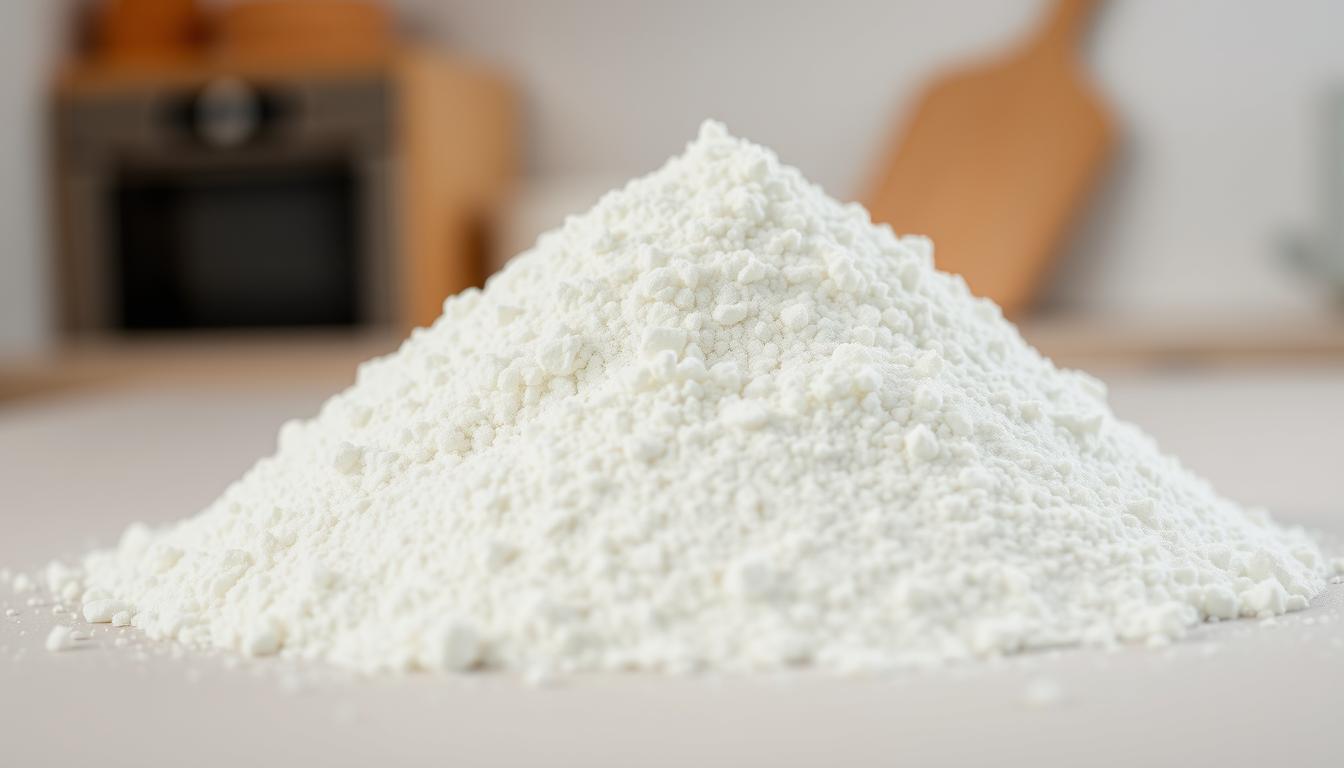
What is Propylene Glycol Alginate?
SUBSCRIBE TO OUR BLOG
Promotions, new products, and recipes.
What You Will Learn
-
The chemical composition and structure of propylene glycol alginate, including its esterification process.
-
How its functional properties—thickening, stabilizing, and emulsifying—are applied in foods like dressings, ice cream, and fruit drinks.
-
Why calcium ions and esterification degree are critical for texture, gel strength, and stability.
-
Regulatory perspectives, including safety evaluations by JECFA and other food safety authorities.
-
Comparisons with other additives such as xanthan gum and sodium alginate, and why it performs uniquely in low-pH environments.
Propylene glycol alginate is a versatile food additive derived from alginic acid, which is a natural polymer obtained from brown seaweed. Known for its thickening, stabilizing, and emulsifying properties, it is widely used in various food products such as salad dressings, ice cream, and fruit drinks. This compound is an ester of alginic acid that includes a propylene glycol group, making it effective in applications where low pH levels and enhanced texture are required.
Propylene glycol alginate is recognized as a safe food additive and meets stringent food grade standards. It has been evaluated by regulatory bodies such as the U.S. food safety organizations and expert committees like the 44th JECFA and the committee on food additives. Its molecular structure, which includes carboxyl groups and hydroxyl groups, contributes to its unique functional properties, ensuring its importance in modern food applications and human health safety.
Composition and Characteristics of Propylene Glycol Alginate
Alginic Acid and Structural Units
Propylene glycol alginate is derived from alginic acid, a natural polymer extracted from brown seaweed. Alginic acid is composed of structural units such as d-mannuronic acid and uranic acid, which give the compound its unique properties. These structural units contain both carboxyl groups and hydroxyl groups, which are essential for the chemical reactions that lead to the formation of propylene glycol alginate. The presence of these groups enhances its functionality in various applications, particularly in food products.
In addition, the structural makeup of alginic acid allows for versatility in creating derivatives like propylene glycol alginate. The compound’s ability to interact with other substances, such as calcium ions, further contributes to its widespread use. By understanding its structural units, manufacturers can modify its characteristics to meet specific requirements in food applications.
Role of Esterification and Propylene Glycol Group
Propylene glycol alginate is an ester of alginic acid that incorporates a propylene glycol group. The process of esterification involves modifying the carboxylic acid groups in alginic acid, which affects the compound’s solubility, gel-forming ability, and overall functionality. The degree of esterification plays a crucial role in determining the compound's molecular weight and its performance in various applications. A higher esterification degree often results in better stability and improved textural properties.
The presence of calcium ions in the formulation can significantly enhance the gel strength and stability of propylene glycol alginate. Calcium ions interact with the esterified alginate, creating a more robust and elastic gel structure. This interaction is especially beneficial in food grade products that require improved texture and consistency, such as salad dressings and dairy products.
Food Applications of Propylene Glycol Alginate
Common Food Products and Uses
Propylene glycol alginate is widely used in the food industry as a thickener, stabilizer, and emulsifier. It is commonly found in salad dressings, where it ensures a smooth and consistent texture while preventing ingredient separation. In fruit drinks, it acts as a stabilizer to keep the beverage homogenous and visually appealing. Additionally, it is an essential ingredient in ice cream, where it contributes to a creamy texture and prevents ice crystal formation.
Another popular application is in dairy products, where propylene glycol alginate enhances texture and stability. It is also used as a beer foam stabilizer, ensuring that the foam remains intact and visually appealing for a longer period. Its ability to perform well in low pH environments makes it particularly effective in acidic food products, such as certain fruit-flavored beverages and dressings.
Food Additives and Safety Standards
Propylene glycol alginate is recognized as a safe food additive and adheres to strict food grade quality standards. It has been approved for use by regulatory bodies such as the u.s. food safety organizations, ensuring its suitability for human consumption. The compound has also been extensively evaluated for its dietary effects of propylene glycol, confirming that it does not pose any significant risk to human health.
Expert committees such as the 44th JECFA and the committee on food additives have reviewed propylene glycol alginate, establishing guidelines for its acceptable daily intake. These evaluations ensure that its use in food products is both safe and effective. Furthermore, the compound's versatility allows it to meet the diverse needs of the modern food industry while maintaining its status as a reliable and safe ingredient.
Scientific and Regulatory Perspectives
Insights from Expert Committees
Propylene glycol alginate has been thoroughly evaluated by scientific and regulatory bodies to ensure its safety and efficacy. The 44th JECFA and 49th JECFA, both expert committees on food additives, have conducted extensive studies on this compound. It is listed in the FNP 52 addendum, along with its CAS number, as a safe and approved food additive.
The committee on food additives has confirmed that propylene glycol alginate poses no significant risks to human health when used within acceptable daily intake limits. These findings highlight the compound's reliability and reinforce its role in creating safe, high-quality food products. Continuous evaluations by regulatory bodies ensure that it remains compliant with global safety standards.
Impact on Body Weight and Drug Administration
Research on propylene glycol alginate has also explored its potential effects on body weight and its role in drug administration. Studies conducted by expert committees have shown no adverse effects on body weight when consumed in appropriate quantities. This makes it a safe choice for consumers and supports its approval as a food additive.
In the pharmaceutical industry, propylene glycol alginate is used in controlled drug administration practices. Its properties, such as stability and solubility, make it a valuable component in drug formulations. These applications demonstrate the compound's versatility beyond the food industry, further solidifying its importance in various sectors.
Comparison with Other Food Additives
Differences Between Xanthan Gum and Sodium Alginate
When compared to other food additives like xanthan gum and sodium alginate, propylene glycol alginate offers unique advantages. Its propylene glycol esters provide better stability and functionality, particularly in low pH environments. In contrast, xanthan gum lacks the lipophilic groups that enhance the emulsifying properties of propylene glycol alginate.
Sodium alginate, another derivative of alginic acid, differs in its solubility and gel-forming properties. While sodium alginate dissolves better in hot water, propylene glycol alginate is more versatile in a wider range of applications. These differences highlight the specific strengths of propylene glycol alginate, making it a preferred choice in many food applications.
Calcium Ions and Functional Differences
The presence of calcium ions significantly impacts the functionality of propylene glycol alginate. Calcium ions enhance gel strength and improve the texture of food products, making them more appealing to consumers. Additionally, the degrees of esterification affect how propylene glycol alginate interacts with other ingredients, further influencing its applications.
Compared to other additives, propylene glycol alginate offers a unique balance of stability, texture, and versatility. These characteristics ensure its continued relevance in the food industry and beyond, meeting the evolving demands of manufacturers and consumers alike.
Understanding the Importance of Propylene Glycol Alginate
Propylene glycol alginate plays a vital role in modern food production, offering a combination of safety, versatility, and functionality. Its ability to improve texture, stability, and consistency in food products makes it an invaluable ingredient. Approved by global regulatory bodies, it ensures both human health and quality standards are upheld.
As consumer demand for high-quality food products continues to grow, propylene glycol alginate remains a trusted and essential component. Its wide range of applications and compliance with safety standards solidify its importance in the food and pharmaceutical industries alike.
Frequently Asked Questions (FAQs)
1. What is propylene glycol alginate made from?
It is derived from alginic acid, a natural polymer obtained from brown seaweed, esterified with propylene glycol to enhance its stability and functionality.
2. Is propylene glycol alginate safe to consume?
Yes, it is recognized as a safe food additive by organizations such as JECFA and U.S. food safety authorities, with established acceptable daily intake levels.
3. What foods commonly contain propylene glycol alginate?
It is often found in salad dressings, fruit drinks, ice cream, dairy products, and even as a beer foam stabilizer.
4. How does propylene glycol alginate compare to sodium alginate?
While both are alginic acid derivatives, propylene glycol alginate is more stable in acidic (low pH) environments and provides better emulsifying properties.
5. Can propylene glycol alginate improve texture in food products?
Yes, it enhances creaminess in ice cream, prevents separation in dressings, and improves mouthfeel in beverages.
6. What role do calcium ions play in propylene glycol alginate’s performance?
Calcium ions interact with the esterified alginate to strengthen gels, improve elasticity, and enhance product stability.
7. Why is propylene glycol alginate used instead of xanthan gum in some recipes?
Unlike xanthan gum, propylene glycol alginate contains lipophilic groups, giving it superior emulsifying power in certain acidic and low-pH applications.
8. Does propylene glycol alginate affect body weight?
Research shows no adverse impact on body weight when consumed within regulatory limits, supporting its safety for regular dietary use.
9. Are there uses beyond the food industry?
Yes, it is also applied in pharmaceuticals for controlled drug delivery, thanks to its stability and solubility.
10. Is propylene glycol alginate suitable for vegetarian diets?
Yes, because it is derived from seaweed, making it plant-based and acceptable for vegetarian food applications.
Frequently Asked Questions (FAQs)
1. What is propylene glycol alginate made from?
It is derived from alginic acid, a natural polymer obtained from brown seaweed, esterified with propylene glycol to enhance its stability and functionality.
2. Is propylene glycol alginate safe to consume?
Yes, it is recognized as a safe food additive by organizations such as JECFA and U.S. food safety authorities, with established acceptable daily intake levels.
3. What foods commonly contain propylene glycol alginate?
It is often found in salad dressings, fruit drinks, ice cream, dairy products, and even as a beer foam stabilizer.
4. How does propylene glycol alginate compare to sodium alginate?
While both are alginic acid derivatives, propylene glycol alginate is more stable in acidic (low pH) environments and provides better emulsifying properties.
5. Can propylene glycol alginate improve texture in food products?
Yes, it enhances creaminess in ice cream, prevents separation in dressings, and improves mouthfeel in beverages.
6. What role do calcium ions play in propylene glycol alginate’s performance?
Calcium ions interact with the esterified alginate to strengthen gels, improve elasticity, and enhance product stability.
7. Why is propylene glycol alginate used instead of xanthan gum in some recipes?
Unlike xanthan gum, propylene glycol alginate contains lipophilic groups, giving it superior emulsifying power in certain acidic and low-pH applications.
8. Does propylene glycol alginate affect body weight?
Research shows no adverse impact on body weight when consumed within regulatory limits, supporting its safety for regular dietary use.
9. Are there uses beyond the food industry?
Yes, it is also applied in pharmaceuticals for controlled drug delivery, thanks to its stability and solubility.
10. Is propylene glycol alginate suitable for vegetarian diets?
Yes, because it is derived from seaweed, making it plant-based and acceptable for vegetarian food applications.

|
About the Author Ed is the founder of Cape Crystal Brands, editor of the Beginner’s Guide to Hydrocolloids, and a passionate advocate for making food science accessible to all. Discover premium ingredients, expert resources, and free formulation tools at capecrystalbrands.com/tools. — Ed |
Enjoyed this post? Subscribe to The Crystal Scoop
Food-science tips, ingredient know-how, and recipes. No spam—unsubscribe anytime.
- Choosing a selection results in a full page refresh.



